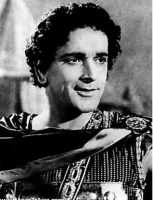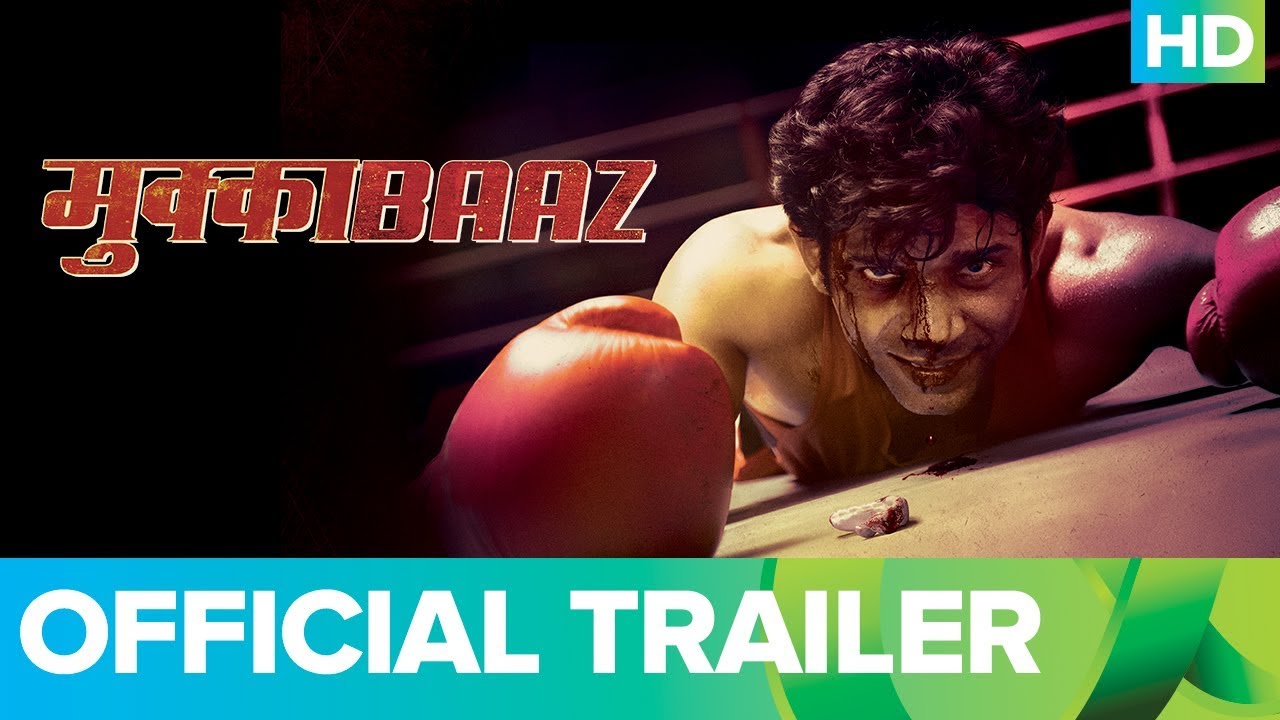Ashutosh Gowarikar’s Mohenjo Daro, which will be released in August this year, is set in 2016 BC – the oldest era in an Indian film. The release of the trailer last week has launched a great number of jokes on social media networking sites. Historians and academicians dissected the 3-minute long video and panned the film team for historical inaccuracies.
“The line that separates ancient history and mythology is often, very blurry,” says K Gopinath, renowned author and film critic, “when adapted to the screen, most of the history accounts get diluted with tales from mythology and folklore”.
In the beginning, Indian cinema had mostly plots based on mythology: stories from yore laced with magic, with a moral message at its core. Mythology served as the bridge that connected cinema, a new and strange medium, to the masses. Historical accuracy wasn’t important in those films. The priority was to set the bar high for entertainment.
*****
Prem Sanyas
 One of the earliest films to be set in ancient India is Prem Sanyas (Die Leuchte Asiens in German), a 1925 silent film directed by German director Franz Osten and Himansu Rai on the life of Gauthama Buddha. The film narrated a story, sourced from both, history texts and folklore. It was shot in India and some parts of present-day Pakistan. The director preferred to shoot the film in real locations, outside studios, and no make-up was used on the actors.
One of the earliest films to be set in ancient India is Prem Sanyas (Die Leuchte Asiens in German), a 1925 silent film directed by German director Franz Osten and Himansu Rai on the life of Gauthama Buddha. The film narrated a story, sourced from both, history texts and folklore. It was shot in India and some parts of present-day Pakistan. The director preferred to shoot the film in real locations, outside studios, and no make-up was used on the actors.
*****
Siddhartha
Stories from the time of the Buddha – mostly from the Pali texts known as  Jataka tales – have made it to the silver screen many times. In 1972, Conrad Rooks directed Siddhartha, an English language film produced by Columbia Pictures. This cinematic adaptation of Herman Hesse’s famous 1922 novel of the same name, had Shashi Kapoor playing the title role. Simi Garewal portrayed the role of Kamala, the courtesan who ignites in Siddhartha the temptations of the material world. The film won the Silver Lion Award at the Venice film festival, but courted controversy for featuring kissing scenes and nudity. The film was widely shot in north India, around Hrishikesh and in the private estate of the Maharaja of Bharatpur.
Jataka tales – have made it to the silver screen many times. In 1972, Conrad Rooks directed Siddhartha, an English language film produced by Columbia Pictures. This cinematic adaptation of Herman Hesse’s famous 1922 novel of the same name, had Shashi Kapoor playing the title role. Simi Garewal portrayed the role of Kamala, the courtesan who ignites in Siddhartha the temptations of the material world. The film won the Silver Lion Award at the Venice film festival, but courted controversy for featuring kissing scenes and nudity. The film was widely shot in north India, around Hrishikesh and in the private estate of the Maharaja of Bharatpur.
*****
Amrapali
 The 1966 film Amrapali, directed by Lekh Tandon, was based on the life of Amrapali, a ‘nagaravadhu’ (courtesan) who lived in Vaishali, a province in ancient India in around 500 BC. A Sanjay Leela Bhansali-style historical drama revolving around two lovers, Amrapali’s highlight was the costumes by Oscar-winning designer Bhanu Atayya. She travelled to Ajanta caves with two of her former batchmates from JJ School Of Arts to research the look required for Amrapali and king Ajatshatru, played by Sunil Dutt. In her book The Art of Costume Design, she wrote, “I was able to handle the subject because I was a student of art. I was able to take the entire look of Ajanta as reference for Amrapali, thanks to my travels and studies. No book will give you that much understanding,” says Bhanu. Referring to Sunil Dutt’s look in a scene where he is disguised as a commoner, “The dhoti was a unique drape. It was not clumsy. It followed his body lines. It required a lot of thinking. ‘You make me look like a different person,’ Dutt said to me.”
The 1966 film Amrapali, directed by Lekh Tandon, was based on the life of Amrapali, a ‘nagaravadhu’ (courtesan) who lived in Vaishali, a province in ancient India in around 500 BC. A Sanjay Leela Bhansali-style historical drama revolving around two lovers, Amrapali’s highlight was the costumes by Oscar-winning designer Bhanu Atayya. She travelled to Ajanta caves with two of her former batchmates from JJ School Of Arts to research the look required for Amrapali and king Ajatshatru, played by Sunil Dutt. In her book The Art of Costume Design, she wrote, “I was able to handle the subject because I was a student of art. I was able to take the entire look of Ajanta as reference for Amrapali, thanks to my travels and studies. No book will give you that much understanding,” says Bhanu. Referring to Sunil Dutt’s look in a scene where he is disguised as a commoner, “The dhoti was a unique drape. It was not clumsy. It followed his body lines. It required a lot of thinking. ‘You make me look like a different person,’ Dutt said to me.”
*****
Sikander
In 1941, director-producer Sohrab Modi made Sikander, a film set in 326 BC  is based on the legend of Alexander the Great. The lead role played by Prithviraj Kapoor who fit the role perfectly. The story begins with Alexander, after conquering Iran, Egypt, Kabul and Qandhar, reaching the banks of Jhelum in 326 B.C. Modi played king Puru, whose courage and integrity impressed the Greek conqueror. The film is remembered for its giant war sequence which involved a huge crew of men, horses, and elephants. Cinematography by Y D Sarpotdar and music composed by Rafiq Ghaznavi and Mir Sahib were the other strong points of the film.
is based on the legend of Alexander the Great. The lead role played by Prithviraj Kapoor who fit the role perfectly. The story begins with Alexander, after conquering Iran, Egypt, Kabul and Qandhar, reaching the banks of Jhelum in 326 B.C. Modi played king Puru, whose courage and integrity impressed the Greek conqueror. The film is remembered for its giant war sequence which involved a huge crew of men, horses, and elephants. Cinematography by Y D Sarpotdar and music composed by Rafiq Ghaznavi and Mir Sahib were the other strong points of the film.
*****
Mayura
The 1975 Kannada film Mayura, directed by Vijay, was set in the time of the Kadamba dynasty (345-525 BC) the earliest native kingdom to rule over what is today the state of Karnataka. The movie had acclaimed actor Rajkumar playing the role of the brahmin youth Mayurasharma, who discovers his royal heritage and realises his destiny of ascension to the Pallava throne. The film’s storyline bears an uncanny resemblance to the recent Baahubali, directed by SS Rajamouli.
*****
Asoka
Cinematographer Santhosh Sivan’s Asoka, which was released in 2002, was a  Bollywood-styled pop version of the story of emperor Ashoka of the Maurya dynasty. His empire, during 268 to 232 BCE, covered entire India, barring the present day Tamil Nadu and Kerala, Bangladesh and parts of Afghanistan. The emperor fought a bloody war, that came to be known as the Kalinga war, in 260 BCE, after which he embraced Buddhism.
Bollywood-styled pop version of the story of emperor Ashoka of the Maurya dynasty. His empire, during 268 to 232 BCE, covered entire India, barring the present day Tamil Nadu and Kerala, Bangladesh and parts of Afghanistan. The emperor fought a bloody war, that came to be known as the Kalinga war, in 260 BCE, after which he embraced Buddhism.
In the movie, Shah Rukh Khan played Ashoka, while Kareena Kapoor Khan played princess Kaurwaki. The production design had an essential Santhosh Sivan touch – dim-lit palace interiors, and exotic wardrobes. The unflinching violence was a kind Indian period cinema had never witnessed before. The Kalinga war sequence was shot using 50 elephants, 600 horses, and 60,000 men. Art director Sabu Cyril made dead bodies out of rubber to recreate the post-war sequence where Ashoka undergoes a spiritual transformation.
Historian Alex von Tunzelmann, in an article in The Guardian, listed out the historical inaccuracies in Ashoka.
 The disclaimer at the beginning of the film says that some characters, events, places ‘have been fictionalised for greater dramatic appeal’, and that the film does not claim to be ‘a complete historical account of Ashoka’s life’. However, the film’s overt Bollywood influence is hard to ignore. Contrary to what history says about the ruler, who was known for his sadistic ways of torturing enemies, the film showcases his romantic, soft side. Going by the appearance of Kerala elements such as snakeboat race, an urumi (a weapon specific to Kerala), an elephant mask etc., it’s apparent that the visual design doesn’t seem to care much about authenticity either. Kerala was not a part of his kingdom and these inclusions can be seen as resorting to populist stereotypes, at best.
The disclaimer at the beginning of the film says that some characters, events, places ‘have been fictionalised for greater dramatic appeal’, and that the film does not claim to be ‘a complete historical account of Ashoka’s life’. However, the film’s overt Bollywood influence is hard to ignore. Contrary to what history says about the ruler, who was known for his sadistic ways of torturing enemies, the film showcases his romantic, soft side. Going by the appearance of Kerala elements such as snakeboat race, an urumi (a weapon specific to Kerala), an elephant mask etc., it’s apparent that the visual design doesn’t seem to care much about authenticity either. Kerala was not a part of his kingdom and these inclusions can be seen as resorting to populist stereotypes, at best.
*****
For mainstream filmmakers in India, the genre of historical film has always been a vehicle for big budget projects, boasting of big stars, grand settings, and splendid song-dance-stunt sequences. Filmmakers like Sanjay Leela Bhansali, through Devdas and Bajirao Mastani, and SS Rajamouli, through Baahubali, have proved the commercial viability of big budget period dramas. When the opulent production designs, delightful dance sequences, and stunning action scenes are tools enough to take the box-office by storm, it is apparent that factual fallacies get overridden.



